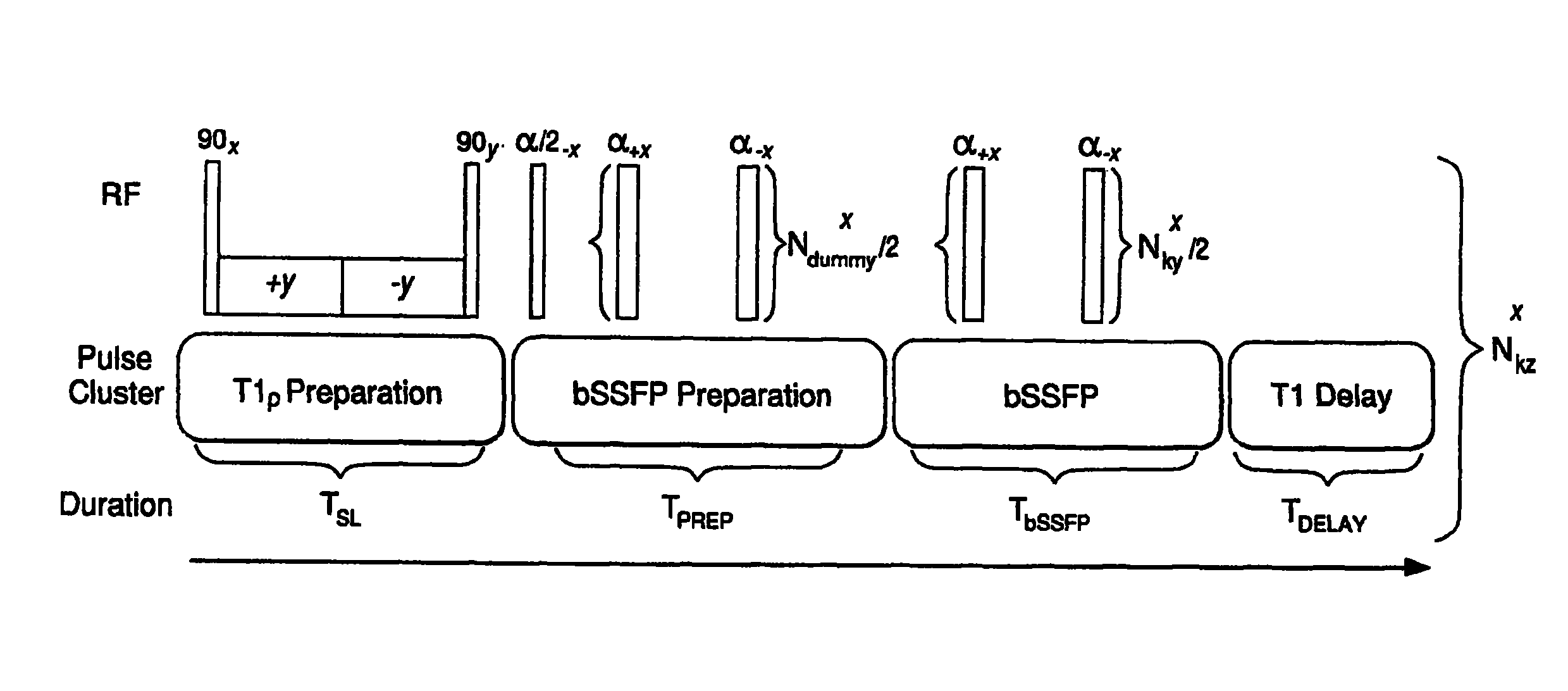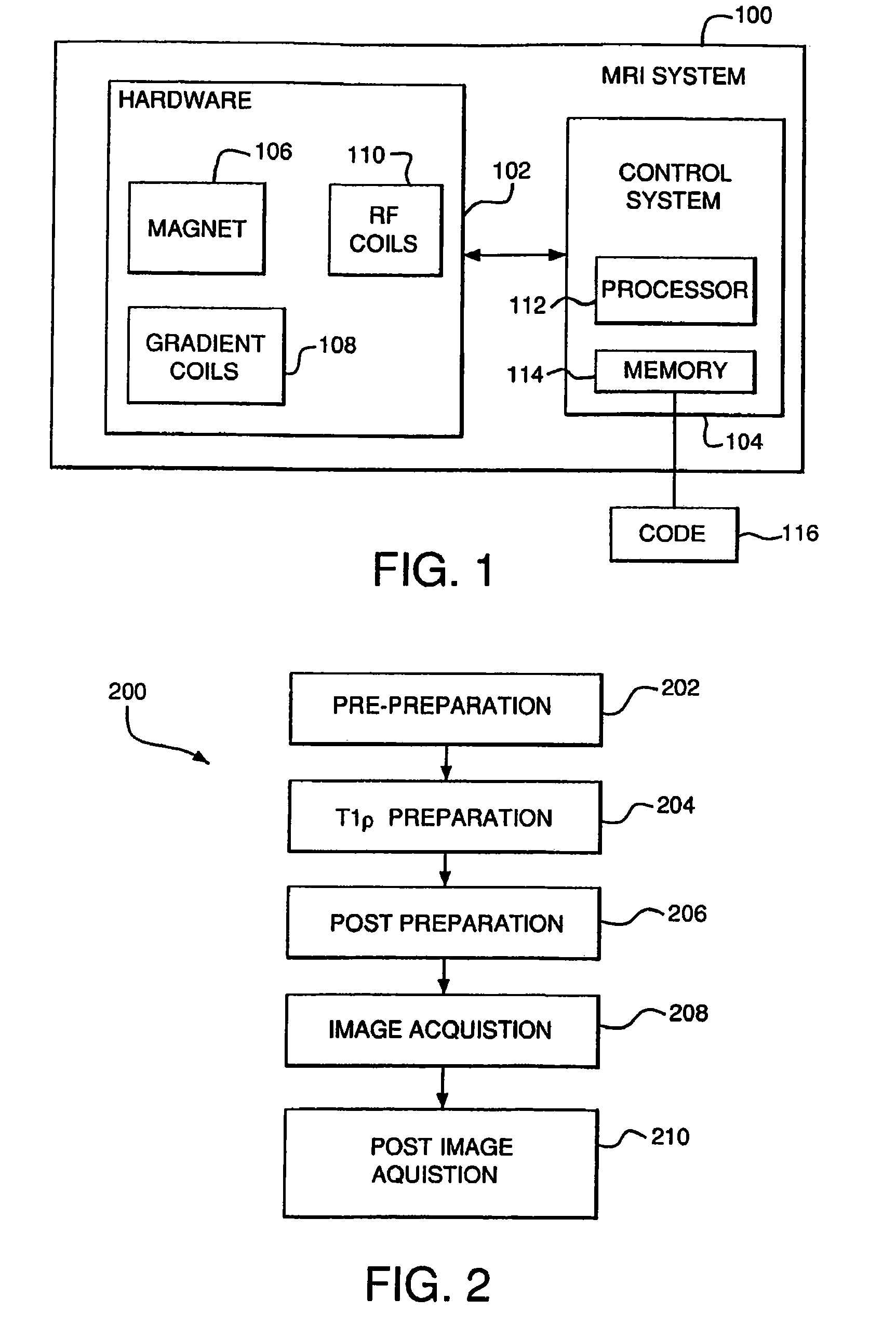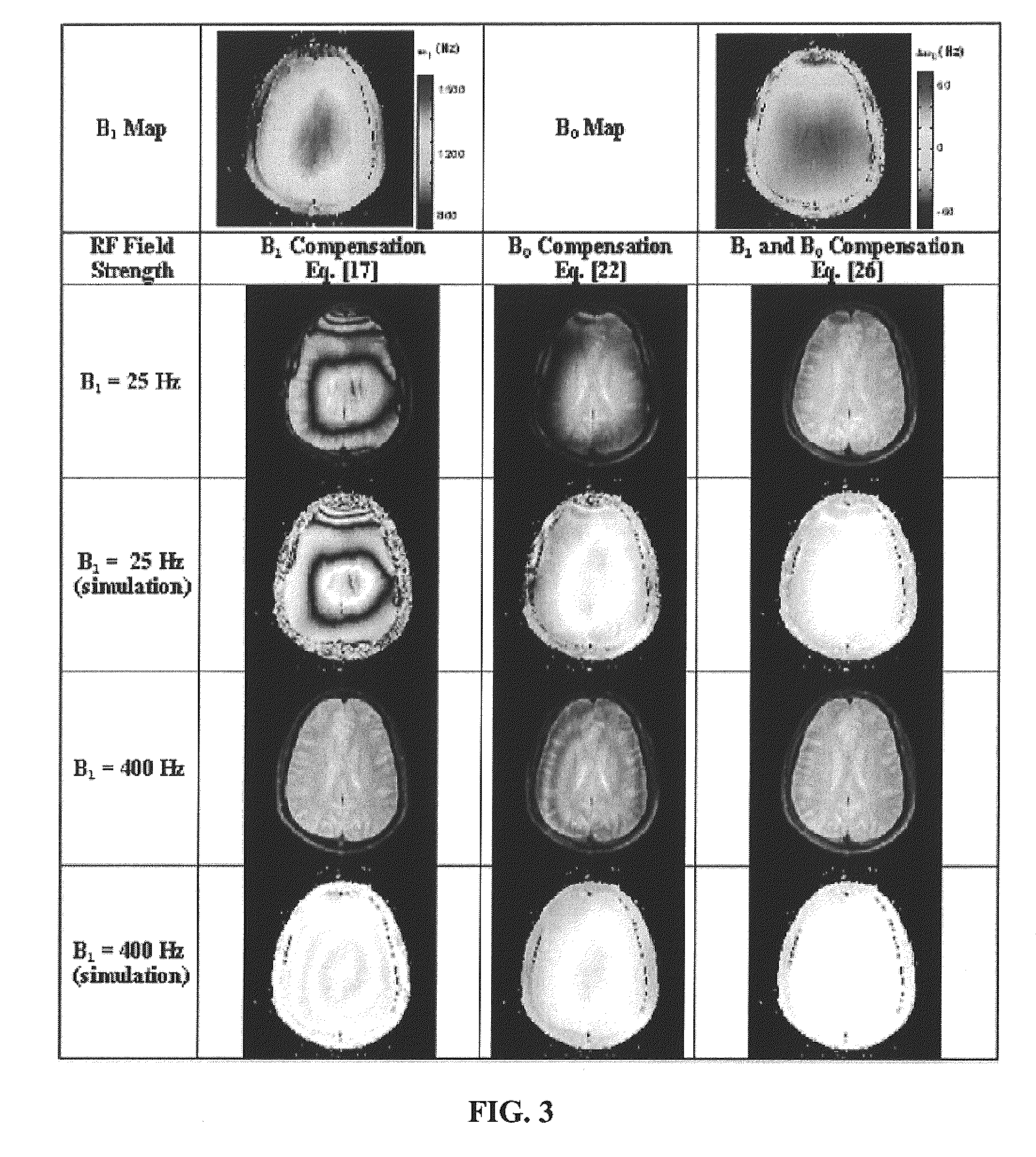Reducing imaging-scan times for MRI systems
a technology of mri and imaging scans, applied in the field of mri, can solve problems such as image artifacts and prevent accurate diagnosis, and achieve the effects of high accuracy, high-temporal efficiency, and exceeding sar limits
- Summary
- Abstract
- Description
- Claims
- Application Information
AI Technical Summary
Benefits of technology
Problems solved by technology
Method used
Image
Examples
example
[0070]Materials And Methods: A MRI “phantom” and two healthy male volunteers were imaged on a 1.5 T Sonata Siemens clinical MRI scanner (Siemens Medical Solutions, Erlangen, Germany) using an eight-channel knee coil (MRI Devices Corp., Muskego, Wis.). The phantom consisted of gel of 2% (w / v) agarose in phosphate-buffered saline (Sigma-Aldrich, St. Louis, Mo.) doped with 0.2 mM MnCl2 to reduce T1. For this particular study, only healthy subjects were studied without any clinically meaningful acute or chronic medical problems.
[0071]Estimation of T1ρ in agarose phantoms: The ability of pulse sequence to estimate accurate T1ρ values was evaluated using two agarose bottle phantoms. A series of T1ρ-weighted images were acquired with the pulse sequence at seven spin-lock durations (TSL) (1, 5, 10, 20, 30, 35, and 40 mseconds). Other imaging parameters were TE=2.5 mseconds, short TR=5 mseconds, FOV=180 mm, 256×128 matrix size with 4 mm-thick sections and spin-locking frequency at 400 Hz. Th...
PUM
 Login to View More
Login to View More Abstract
Description
Claims
Application Information
 Login to View More
Login to View More - R&D
- Intellectual Property
- Life Sciences
- Materials
- Tech Scout
- Unparalleled Data Quality
- Higher Quality Content
- 60% Fewer Hallucinations
Browse by: Latest US Patents, China's latest patents, Technical Efficacy Thesaurus, Application Domain, Technology Topic, Popular Technical Reports.
© 2025 PatSnap. All rights reserved.Legal|Privacy policy|Modern Slavery Act Transparency Statement|Sitemap|About US| Contact US: help@patsnap.com



